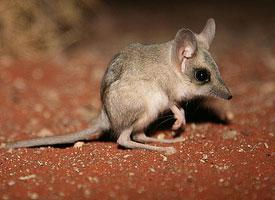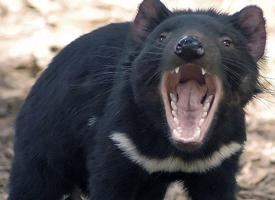
Váhy a míry
| Délka | od 30 do 45 cm |
|---|---|
| Hmotnost | od 700 do 2000 g |
Popis zvířete
The Eastern quoll, scientifically known as Dasyurus viverrinus, is a fascinating and unique mammal native to Australia, primarily found in Tasmania with historical populations on the Australian mainland. This nocturnal creature is a member of the Dasyuridae family, which includes other carnivorous marsupials such as the Tasmanian devil and the spotted-tailed quoll.Physical Characteristics:
The Eastern quoll is a small to medium-sized marsupial, typically weighing between 0.5 to 1.3 kilograms, with males being larger than females. They possess a slender body covered in fur that varies in color from fawn to dark brown or black, adorned with white spots on the back and sides, but not on the tail, which distinguishes them from their spotted-tailed quoll cousins. Their underbelly is usually a creamy white or light grey. One of their most distinctive features is their pointed snout and bright pink nose, accompanied by sharp teeth adapted for a carnivorous diet. They have relatively large ears and a bushy tail, contributing to their agile and swift movements.
Habitat and Distribution:
Originally widespread across southeastern Australia, the Eastern quoll's presence on the mainland has drastically declined since the early 20th century, primarily due to habitat destruction, predation by introduced species such as foxes and cats, and disease. Today, they are predominantly found in Tasmania, inhabiting a variety of environments from rainforests and wet sclerophyll forests to coastal heaths and agricultural lands. They are versatile in their habitat requirements but need dense ground cover for shelter and hunting.
Diet and Hunting Behavior:
Eastern quolls are carnivorous, with a diet that includes insects, small mammals, birds, and carrion. They are solitary hunters, primarily active at night (nocturnal), although they can occasionally be seen during the day (diurnal) in areas free of predators. Their hunting strategy involves foraging on the ground or climbing trees in search of prey, using their keen sense of smell and sharp claws to catch and consume their meals.
Reproduction and Lifespan:
The breeding season for Eastern quolls typically occurs in winter, with females giving birth to up to six young after a gestation period of about 21 days. The offspring, called joeys, are born extremely undeveloped and crawl into the mother's pouch where they continue to develop over the next couple of months. After leaving the pouch, the young quolls remain in a den and are weaned by around ten weeks of age. Eastern quolls have a relatively short lifespan, living up to 5 years in the wild, though most live only 2-3 years.
Conservation Status:
The Eastern quoll is currently listed as endangered, with its population continuing to decline. Conservation efforts are in place to protect this species, including habitat preservation, control of invasive predators, and breeding programs aimed at reintroduction to the mainland. The species' survival depends on ongoing and increased conservation measures to mitigate the threats they face and to restore a sustainable population in their natural habitat.
In summary, the Eastern quoll is a remarkable and unique marsupial with distinctive physical features and behaviors. Despite facing significant challenges, efforts to conserve and protect this species offer hope for its future survival and the preservation of Australia's rich biodiversity.
Podobná zvířata
Nové fotografie zvířat
Top 10 zvířat
- Common house mosquito (Culex pipiens)
- Common cockchafer (Melolontha melolontha)
- Colossal squid (Mesonychoteuthis hamiltoni)
- Hooded merganser (Lophodytes cucullatus)
- Australian box jelly (Chironex fleckeri)
- Fruit fly (Drosophila melanogaster)
- Common reed warbler (Acrocephalus scirpaceus)
- Elephant hawk moth (Deilephila elpenor)
- Moustached guenon (Cercopithecus cephus)
- Diana monkey (Cercopithecus diana)

